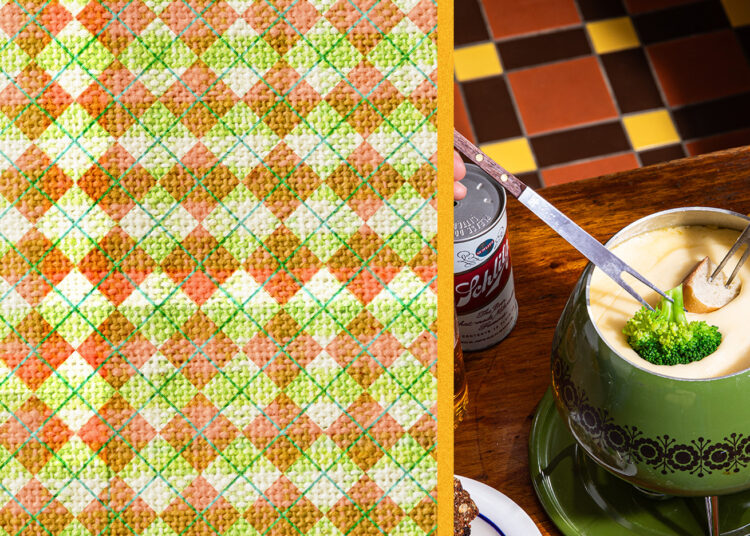Lille Allen/Eater
If you’re open to experimentation, anything is possible
Thanks to the evolution of the vegan cheese industry, being dairy-free no longer means having to forego dishes built primarily around traditional dairy. That said, vegan fondue has remained something of a white whale, due in large part to the difficulty of keeping dairy-free cheese nice and melty for the duration of a dinner.
But while it’s tricky to get it right, vegan fondue isn’t impossible — especially if you don’t mind tinkering. At Rebel Cheese, a vegan cafe and cheese shop in Austin, Texas, Valentine’s Day means a rich, Alpine-inspired fondue made with the restaurant’s faux Gruyere and spiced with nutmeg and coriander. The dish is now a cult favorite, but success didn’t happen overnight: according to Rebel Cheese co-owner Kirsten Maitland, the recipe took a long time to develop, with plenty of trial and error along the way.
“The biggest challenge, and this is true for any kind of creamy vegan sauce, is getting the texture and the consistency right,” Maitland says. “And with fondue, you can’t just get it right in the beginning. It has to hold up, because it’s something you want to enjoy throughout the course of a meal.”
If you’re trying to make your own vegan fondue, Maitland says that you need to be open to a little experimentation. She suggests using a soft, melty cheese, like vegan Swiss or mozzarella, as the main cheese in your fondue, and beginning with a (dairy-free) bechamel sauce, which will help stabilize the vegan cheese and add plenty of creaminess. If you’re feeling really ambitious and want to ensure the fondue is as smooth as possible, you could use an actual stabilizer like soy lecithin or arrowroot powder, both of which are commonly used in vegan cheese preparations.
Overthrow Hospitality, the New York- and Los Angeles-based restaurant group behind acclaimed vegan spots like Cadence and Ladybird, has seen a recent spike in demand for vegan fondue. Executive chef Pajarito Xaltepec has developed multiple vegan fondue recipes, including a now off-menu artichoke-and-chardonnay version at Ladybird. Xaltepec recommends starting with a cashew-based cheese for ultimate smoothness, but cautions against using a cheese with too much moisture. “Cheeses with high moisture content may become too watery or separate when they are heated,” he says. “You want to look for vegan cheeses with a high meltability.”
Looking beyond cheese is also a great way to give your vegan fondue a boost, especially if the cheeses you’ve chosen aren’t producing a smooth, rich texture. Maitland suggests adding pureed potatoes or rice for both creaminess and heft, while generous amounts of herbs, garlic, and spices help ensure that the fondue will be nice and flavorful. At Ladybird, Xaltepec likes to use lots of shallots, freshly ground pepper, and white wine. But Maitland cautions against adding acids, such as lemon juice or wine, too quickly: that can cause the fondue to separate, leaving you with an unappealing bowl of gloop that no one at your dinner party will want to eat. Another important factor is heat: major swings in temperature can ruin your fondue, since vegan cheeses aren’t as forgiving on the stovetop as their dairy-based counterparts. “You want to melt your cheese over a double broiler and go slow,” Xaltepec says. “If the cheese becomes hot too quickly, you risk separation and graininess in texture.”
And though there are a number of highly rated vegan fondue recipes online, Maitland suggests getting comfortable with experimentation. She recommends starting out with a familiar recipe that’s similar to fondue, like the sauce for a vegan mac and cheese, and amping it up with more cheese.
“Don’t be afraid,” Maitland says. “You just have to play around with the types of cheeses and spices that you like to make a good fondue. You just have to get started, and modify it until you find something that really works.”














